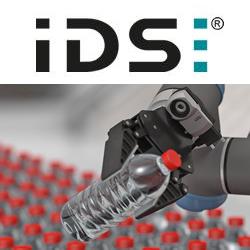XPONENTIAL - uAvionix, DJI, And Stanford University Partner In Safe Aircraft Separation
In an era of increasing incidences of drone/airliner "near misses," 3 organizations are working together on disruptive sense and avoid technologies to help insure safe aircraft separation.
PALO ALTO, Calif., April 27, 2016 /PRNewswire/ -- In an era of increasing incidences of drone/airliner "near misses," 3 organizations are working together on disruptive sense and avoid technologies to help insure safe aircraft separation.
Eric Mueller works at the NASA Ames Research Center and is a Ph.D. candidate at Stanford University. He co-authored a paper with his professor, Mykel Kochenderfer at Stanford, titled "Multi-rotor Aircraft Collision Avoidance using Partially Observable Markov Decision Processes." The paper describes how speed changes by agile multi-copters and small unmanned aerial systems (UAS) can be used in addition to horizontal and vertical maneuvers to maintain safe operating distances between aircraft.
The Markov Decision Process (MDP) uses algorithms to model decision making, such as how an aircraft decides to maneuver to avoid oncoming traffic. MDP is applied in situations where some variables are possibly random (such as how another aircraft may decide to maneuver) and others are under the control of the decision maker (such as an aircraft's autopilot.)
uAvionix supplied its miniature "ping" ADS-B hardware for tests at Stanford to determine the effectiveness of the sense and avoid algorithms under development.
"Ping was the only system that provided a realistic way for us to validate our sense and avoid algorithms with live traffic for commercial aircraft separation assurance," said Mueller.
DJI, maker of Phantom and Inspire drones, supplied aircraft for testing.
"It was awesome to see our device in action providing real-time positions of commercial aircraft. This is a key part to our overall strategy to construct a safer sky," said Paul Beard, uAvionix CEO.
ADS-B units in the past were too large and too expensive for small drones. This month uAvionix introduced "pingRX," a tiny ADS-B receiver that weighs 5 grams and measures less than a square inch. The expected price for pingRX will be $199.
uAvionix will display the patent-pending "pingRX" ADS-B receiver this week at sUSB Expo in San Francisco 27-29 April and the Xponential/AUVSI trade show in New Orleans, 3-5 May.
More information about the new pingRX and other uAvionix technology can be found at www.uavionix.com.
About uAvionix
uAvionix develops the world's smallest, lightest and most affordable family of ADS-B transponders, receivers and navigation tools. uAvionix' Ping network system combines hardware, software, and real time airspace mapping to enable companies to safely and reliably operate drones in the NAS. Founded in 2015, Palo Alto based uAvionix has gathered a cross-disciplinary team of experts in embedded RF engineering, sUAS operations and compliance, hardware, software, and cloud services. CEO Paul Beard is a serial entrepreneur with an extensive background in aviation and unmanned aircraft systems.
Featured Product

3D Vision: Ensenso B now also available as a mono version!
This compact 3D camera series combines a very short working distance, a large field of view and a high depth of field - perfect for bin picking applications. With its ability to capture multiple objects over a large area, it can help robots empty containers more efficiently. Now available from IDS Imaging Development Systems. In the color version of the Ensenso B, the stereo system is equipped with two RGB image sensors. This saves additional sensors and reduces installation space and hardware costs. Now, you can also choose your model to be equipped with two 5 MP mono sensors, achieving impressively high spatial precision. With enhanced sharpness and accuracy, you can tackle applications where absolute precision is essential. The great strength of the Ensenso B lies in the very precise detection of objects at close range. It offers a wide field of view and an impressively high depth of field. This means that the area in which an object is in focus is unusually large. At a distance of 30 centimetres between the camera and the object, the Z-accuracy is approx. 0.1 millimetres. The maximum working distance is 2 meters. This 3D camera series complies with protection class IP65/67 and is ideal for use in industrial environments.
